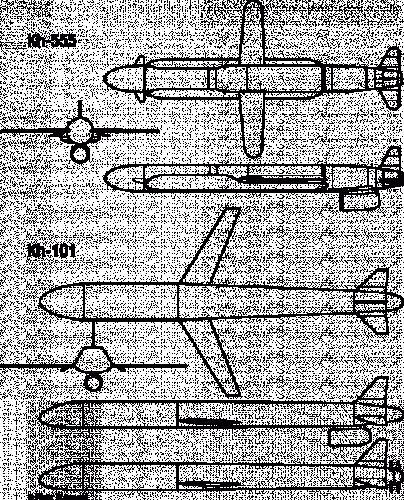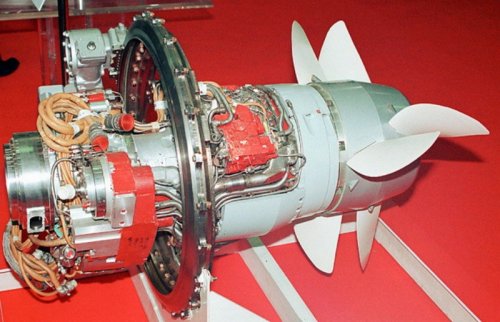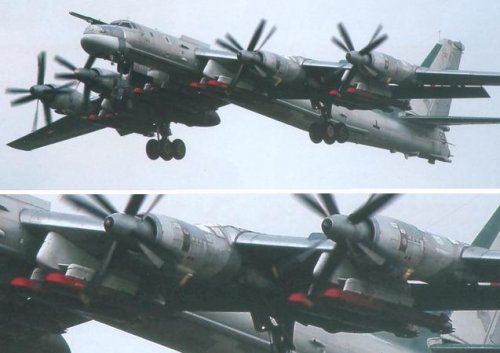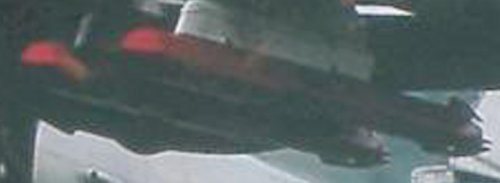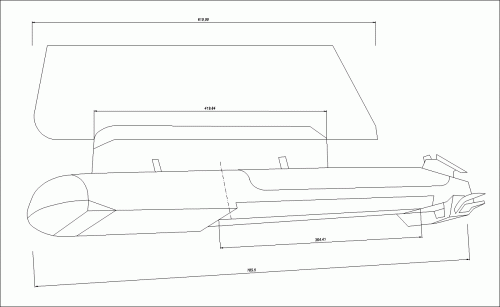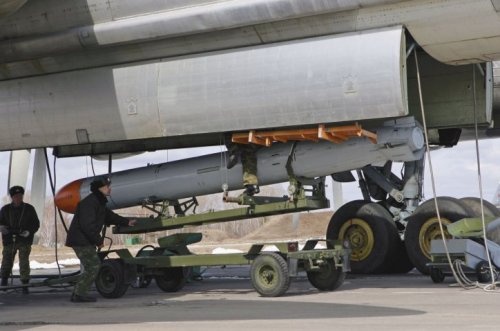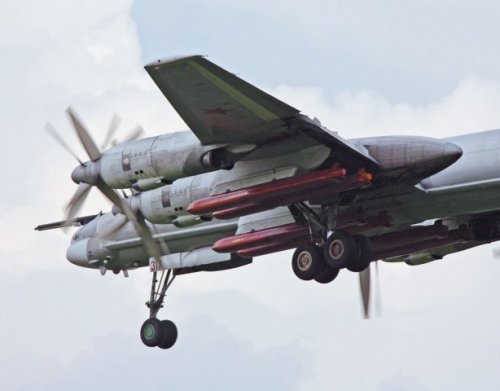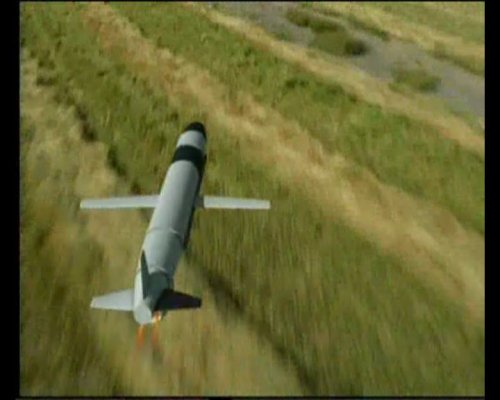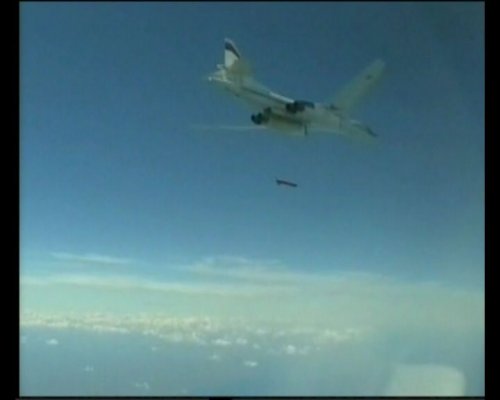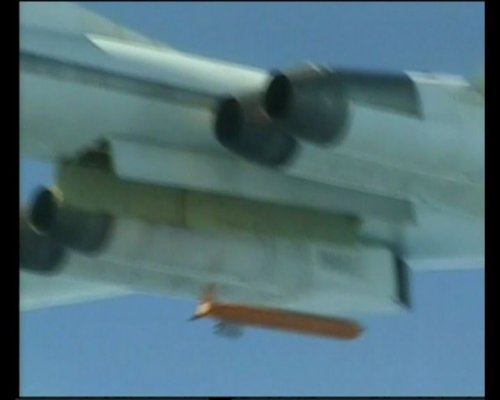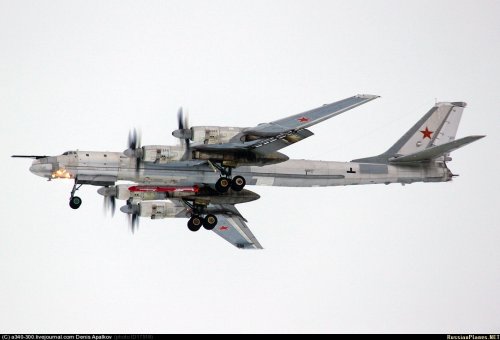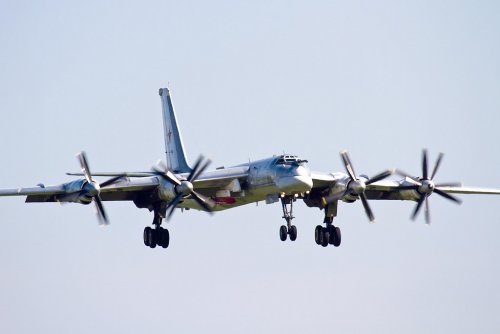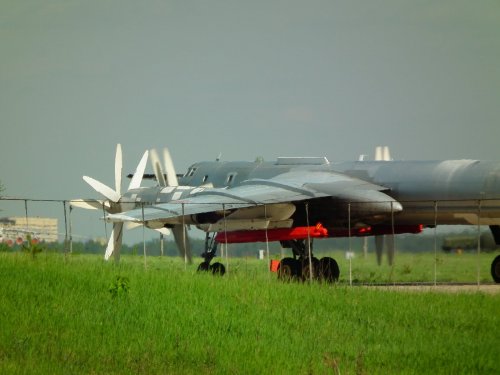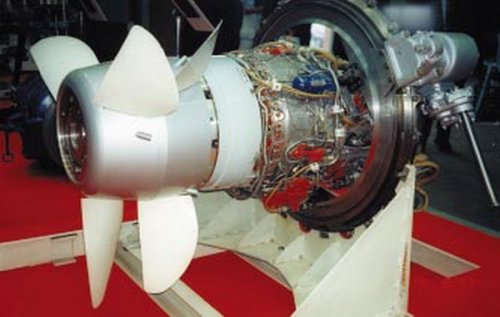Full article from JDW.
Jane's Defence Weekly - October 24, 2007
Details emerge of Russia's latest cruise missiles
Robert Hewson Jane's Air-Launched Weapons Editor
London
Exclusive images of Russia's two most advanced long-range airborne weapons - the Kh-101 and Kh-555 conventionally armed cruise missiles - have recently been acquired by Jane's .
Russia has been modernising its cruise missile inventory over the past few years and has recently increased the operational tempo of the strategic bomber fleet that would deploy such weapons.
Developed by the Raduga Design Bureau (now part of the unified Tactical Missiles Corporation), the Kh-555 is a modified version of the original nuclear-tipped Kh-55 strategic stand-off weapon (AS-15 'Kent'). It is thought to have entered service in 2004, but details are scant. The Kh-101 is a stealth-optimised design, conceived as a Kh-55 replacement. No images of this missile have previously been shown in public.
In the imagery acquired by Jane's , the Kh-101 is seen carried in pairs on four pylons under an upgraded Tu-95MS16 'Bear-H' (Tu-95MSM) bomber. The Tu-95MS16 variant can carry a theoretical load of 16 cruise missiles (Kh-55s): 10 on underwing pylons and six on its MKU-6-5 internal rotary launcher. This 'overload', which requires two pylons each to carry three missiles, proved to be impractical and is not used operationally. Typically, the combat load for a 'Bear' would be carried on the internal launcher only to maximise aircraft range.
The Tu-95MS16 variant maintains the ability to carry underwing missiles as seen in the image (unlike the Tu-95MS6). The eight Kh-101 configuration may be the (maximum) standard load for this new weapon. The aircraft is adorned with photo calibration markings and so the red-painted missiles are likely to be a trial fit.
The Kh-101 appears to be longer than the Kh-55/555 series (approximately 7 m in length) with a more slender and angular design. The missile has a chiselled nose section and a flat-sided triangular main body, all calculated to reduce radar cross-section. Three folding tail fins are mounted at the end of a tapered rear section. A pop-out wing is mounted under the missile, which is thought to be powered by an NPO Saturn TRDD-50 turbojet. The podded engine is housed inside the rear of the missile and drops down on a pylon when the missile is released from its launch aircraft.
The operational status of the Kh-101 is still not clear, although it is obviously in an advanced test and development stage and is probably available for use. Russian sources note that flights with the missile and the Tu-95MSM have been ongoing for over a year.
Photographs of the Kh-555 being loaded onto a Tu-95 are significant because this missile had previously been associated only with the Tu-160 'Blackjack' bomber. It was always probable that the Kh-555 would be integrated with the Tu-95 but doing so increases the operational flexibility of Russia's bomber force and provides the Tu-95 with a modern conventional weapon capability for the first time.
Given the increased size of the Kh-101 (about 1 m longer than the Kh-55), it is unlikely that this missile can be carried on the standard MKU-6-5 internal launcher. It is possible that a conventionally armed Tu-95 could operate with a mix of external Kh-101s and internal Kh-555s.
Pics
- The first pictures of the Kh-101 cruise missile to emerge in public show eight of the stealthy missiles loaded on an upgraded Tu-95MS bomber (Via Robert Hewson)
- Russian ground crew load a Kh-555 into the internal weapons bay of a Tu-95MS. The missile’s conventional warhead section appears to be shorter than the nuclear Kh-55 (Via Robert Hewson)

